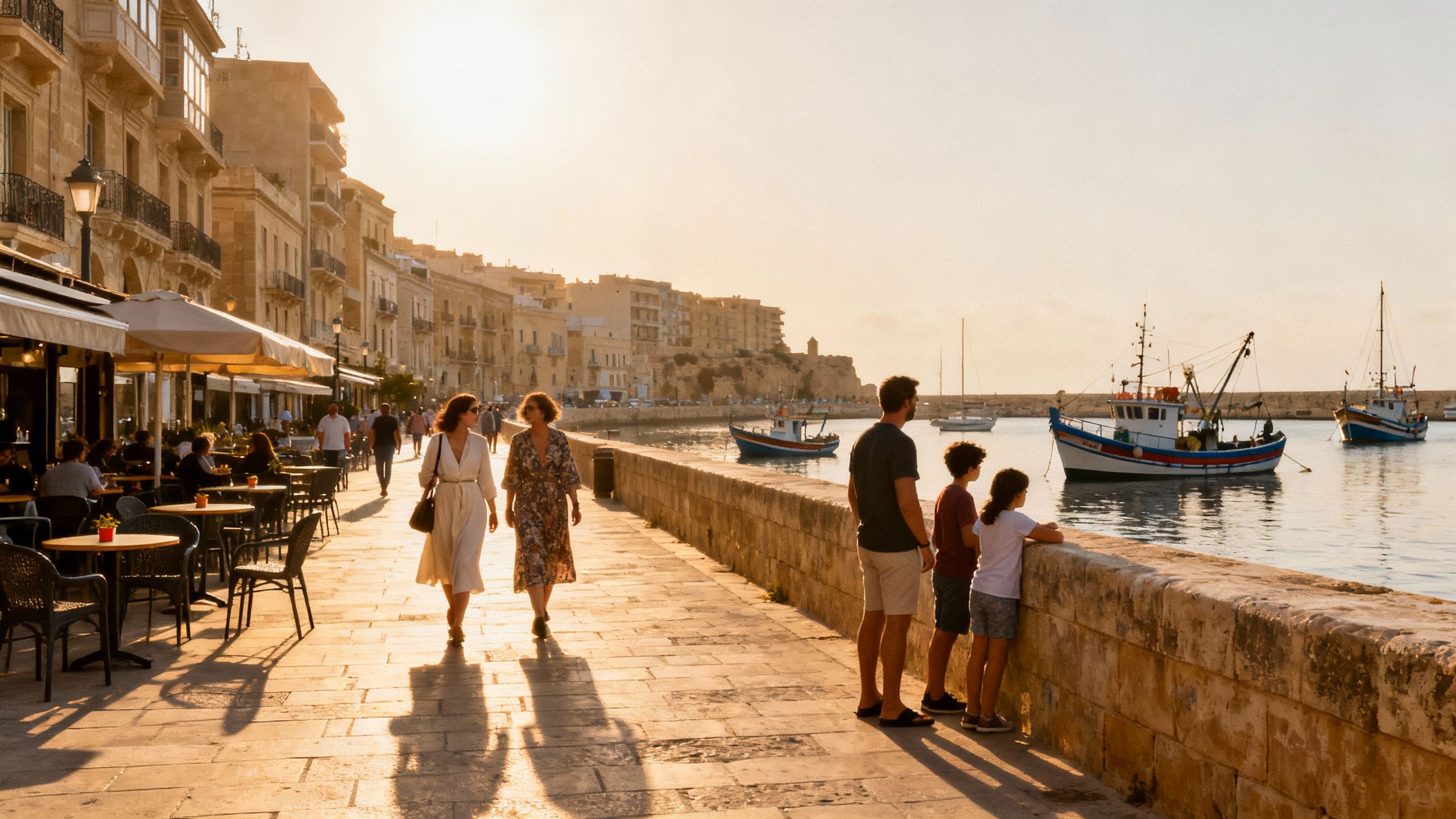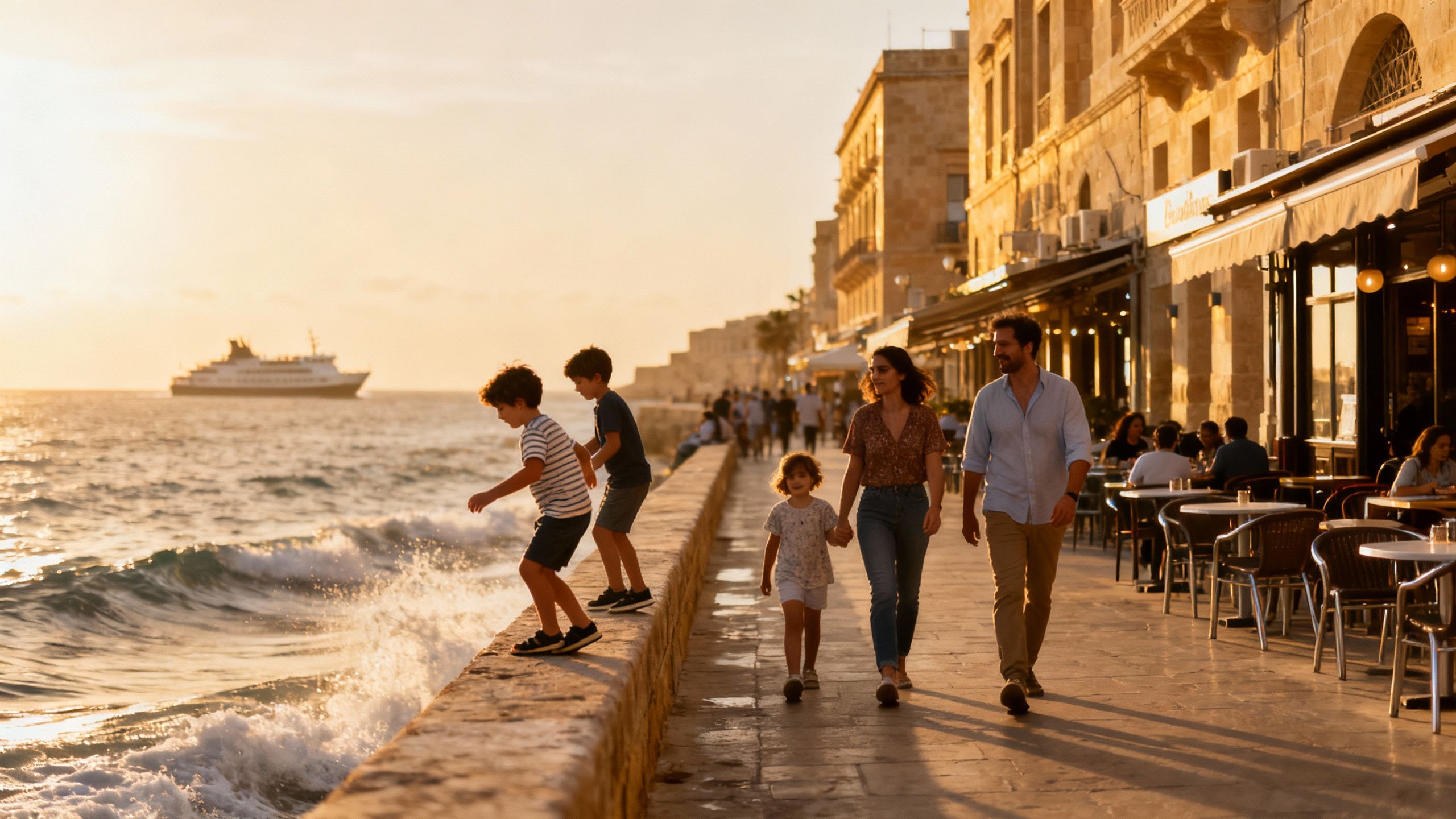Malta: The Life You Buy (and What Policy Changes Mean)
A sensory tour of Malta’s neighbourhoods paired with current market data and residency changes — imagine the life, then match it to property, experts and timing.
Imagine an afternoon in Valletta: espresso on a limestone sill, a trampling of church bells, and the sea’s pale blue folding into the harbour. Malta is small enough that a short drive takes you from baroque streets to pebble coves; compact enough that the life you want is often within walking distance. That ease is part of the island’s appeal — and part of what makes its property market singularly tight. According to recent market analysis, prices continue to rise even as policy and programme changes reshape who can buy and why.
Living Malta: rhythms, neighbourhoods, taste

To live here is to accept a certain intimacy with history and the sea. Streets are narrow, buildings compact, terraces and internal courtyards prized for light and privacy. The Residential Property Price Index shows steady annual gains — an important practical note for anyone dreaming of a quiet terrace in a seventeenth‑century street: lifestyle demand translates directly to price pressure, especially in Valletta, Sliema and St Julian’s.
Valletta, the city that reads like a book
Walk the grid and you feel the city’s patience: carved lintels, shuttered balconies, small cafes that know your name after two visits. Properties here are often restored palazzini or sensitively adapted apartments with high ceilings and sash windows. The trade‑off is obvious — unmatched character in exchange for smaller footprint and, often, stepped access — but the reward is a life lived amid museums, theatres and harbour light.
Sliema & St Julian’s: seaside sociability and late afternoons
These northern harbour towns are where the island’s social life concentrates: sea promenades, contemporary cafes, and the cluster of international schools and clinics that matter to relocating families. Apartment living predominates here — modern blocks, converted townhouses and new-build towers that cater to convenience and sea views. Expect higher per‑square‑metre figures and, crucially, liquidity: these areas trade more often and attract short‑term lettings and professional tenants.
- Lifestyle highlights: Valletta opera nights, Sliema promenade morning runs, St George’s Bay sunsets, Marsaxlokk Sunday fish market, Mdina’s evening silence.
Making the move: marrying life and logistics

Life‑first thinking must meet policy reality. Recent adjustments to Malta’s residency pathways — including revisions to the Malta Permanent Residence Programme — change thresholds for qualifying property and fees, and therefore the profile of buyers who enter the market. These shifts can open opportunities (more family‑friendly terms in some routes) while closing off certain price bands to investors focused only on residency gains.
Property types and how they shape everyday life
A palazzo in Valletta asks for stewardship: restoration, humid‑control, bespoke joinery. A maisonette in a village offers private terraces and summer shade. New apartments buy convenience — parking, elevators and contemporary M&E — but rarely the patina of older fabric. Choose by how you intend to spend mornings and evenings: a kitchen that opens to a courtyard will change the way you host, while a sea‑facing balcony shapes your daily commute to sunlight.
Working with local experts who know life, not just law
- 1. Seek agents who can point to recent restorations and craftsmen they trust; Malta’s older stock demands specialist knowledge. 2. Ask for day‑and‑night photos and a short video of the neighbourhood — light, noise and wind matter here. 3. Confirm utility capacity and insulation details for historic buildings before committing. 4. Request evidence of past rental performance if you plan to let seasonally; short seasons skew yield expectations. 5. Use an advisor to interpret residency thresholds and whether a purchase will meet qualifying conditions for the route you prefer.
Insider knowledge: what expats say and what the data confirms
Expat experience is simple and blunt: Malta is intensely liveable but increasingly expensive. Statistics confirm steady price growth; policy decisions — from residency programme reforms to the European Court of Justice’s recent ruling on citizenship‑by‑investment — reverberate through sentiment and supply. For buyers this means timing and local counsel matter as much as taste.
Cultural integration, language and daily rhythms
English is an official language, which eases everyday life and professional logistics for many arrivals. Still, neighbourhood belonging comes through small rituals: the morning barista who remembers your order, market stalls on fish day, invitations to festa evenings in village squares. Building these ties accelerates the practical side of relocation — service providers, builders and local contacts often come through introductions rather than listings alone.
How life evolves: stewardship and the long view
- Long‑term considerations: restored fabric requires ongoing care; community activism shapes planning decisions; proximity to schools and clinics becomes more valuable with time; terraces and courtyards retain premium status; access to a reliable local agent reduces friction when you rent or resell.
If Malta’s charm is its compressed pleasures — history, sea, conviviality — then buying here is an exercise in aligning daily life with durable stewardship. Begin with a visit that matches likely weekdays and a weekend, arrive with specific neighbourhoods, and test the small logistics that become habits. Then brief an adviser on the life you want; the best local agencies supply not only listings, but introductions to artisans, schools and the baker around the corner.
Conclusion: imagine the life first, then secure it practically. Spend an afternoon in Valletta, a morning on the Sliema promenade, and a Sunday in Marsaxlokk to understand how different rhythms suit different homes. When you are ready, work with a Maltese firm that can translate atmosphere into verifiable details — recent transaction evidence, neighbourhood noise profiles and clear residency implications — so that the dream you buy is the life you live.
Norwegian with years in Florence guiding clients across borders. I bridge Oslo and Tuscany, focusing on legal navigation, cultural context, and enduring craftsmanship.


